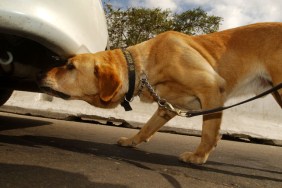Researchers at The Pine Street Foundation, a research center in San Anselmo, California, have discovered that dogs have the ability to detect cancerous tumors earlier and more accurately than conventional diagnostic methods such as mammograms and x-rays.
“We were intrigued by studies showing how dogs could detect cancer by sniffing the urine samples of patients,” says Dr. Michael McCulloch, Pine Street’s lead researcher. “We…




